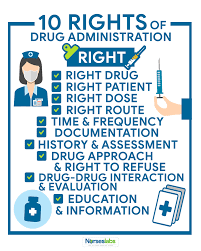A nurse is caring for a client receiving mechanical ventilation via an endotracheal (ET) tube. The high-pressure alarm is beeping, and the client is experiencing respiratory distress. The nurse is unable to determine the cause of the alarm. Which of the following actions should the nurse take?
Re-evaluate the client for an ET cuff leak.
Assess for disconnected tubing.
Decrease the ventilator flow rate.
Deliver breaths manually with a resuscitation bag.
The Correct Answer is D
Choice A reason
Re-evaluate the client for an ET cuff leak is not appropriate. While an ET cuff leak could contribute to respiratory distress, the immediate concern is the high-pressure alarm, which indicates increased resistance to airflow. The nurse should address the alarm first and then assess for other potential causes, including an ET cuff leak.
Choice B reason:
Option B: Assess for disconnected tubing is not appropriate. A disconnected tubing is also a potential cause of the high-pressure alarm. However, before checking for disconnected tubing, the nurse should first deliver manual breaths with a resuscitation bag to provide the client with adequate ventilation.
Choice C reason:
Decrease the ventilator flow rate is not appropriate. Decreasing the ventilator flow rate might not be the appropriate action in this situation, as the high-pressure alarm indicates increased resistance, which might require increased flow to overcome. Additionally, the nurse should not delay taking immediate action by adjusting ventilator settings without knowing the specific cause of the high-pressure alarm.
Choice D reason:
When the high-pressure alarm is beeping, and the client is experiencing respiratory distress, it indicates that there is an increased resistance to airflow within the ventilator circuit or the client's airway. This can be a life-threatening situation, and immediate action is required.
Nursing Test Bank
Naxlex Comprehensive Predictor Exams
Related Questions
Correct Answer is B
Explanation
A is incorrect because the completion of the incident report should not be documented in the client's medical record, but in a separate file for quality improvement purposes.
B is correct because the time the medication was given is an essential fact related to the incident that should be documented in the client's medical record.
C is incorrect because the reason for the medication error should not be documented in the client's medical record, but in the incident report for analysis and prevention of future errors.
D is incorrect because the notification of the pharmacist should not be documented in the client's medical record, but in the incident report for follow-up and corrective actions.

Correct Answer is ["A","B","C"]
Explanation
A. Assess peripheral circulation hourly. This is correct because clients with SCD are at risk of vaso-occlusive crisis, which can impair blood flow to the extremities and cause tissue ischemia and necrosis. The nurse should monitor for signs of poor circulation such as pallor, coolness, numbness, or pain.
B. Assess the client's mouth every 8 hr. This is correct because clients with SCD are prone to oral ulcers, infections, and dental problems due to chronic anemia and reduced oxygen delivery to the oral mucosa. The nurse should inspect the mouth for lesions, bleeding, inflammation, or infection and provide oral hygiene as needed.
C. Use humidification with oxygen therapy. Administer IV fluids. This is correct because clients with SCD need adequate hydration and oxygenation to prevent sickling of red blood cells and further complications. Humidification helps moisten the airways and prevent dehydration of the mucous membranes. IV fluids help maintain fluid and electrolyte balance and reduce blood viscosity.
D. Raise the knee position on the client's bed. This is incorrect because this can impede venous return and worsen peripheral circulation. The nurse should keep the client's extremities in a neutral position and avoid tight or restrictive clothing or devices.
E. Use an automated blood pressure cuff on the client's arm. Prepare for platelet transfusion. This is incorrect because this can cause mechanical trauma to the arm and trigger a vaso-occlusive crisis. The nurse should use a manual blood pressure cuff and avoid applying pressure to the arm. Platelet transfusion is not indicated for clients with SCD unless they have thrombocytopenia or bleeding.
Whether you are a student looking to ace your exams or a practicing nurse seeking to enhance your expertise , our nursing education contents will empower you with the confidence and competence to make a difference in the lives of patients and become a respected leader in the healthcare field.
Visit Naxlex, invest in your future and unlock endless possibilities with our unparalleled nursing education contents today
Report Wrong Answer on the Current Question
Do you disagree with the answer? If yes, what is your expected answer? Explain.
Kindly be descriptive with the issue you are facing.
